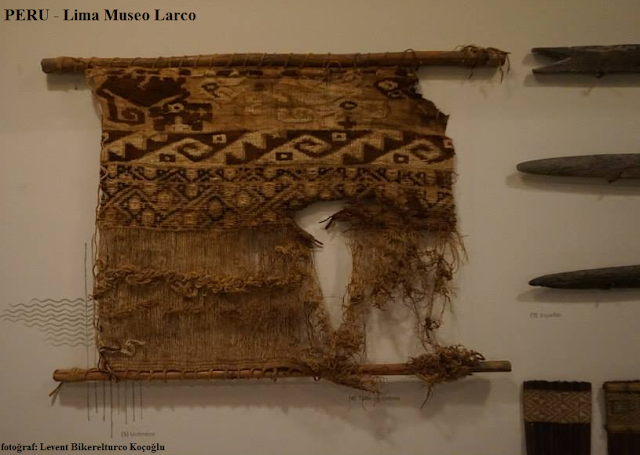"Divanü Lügati't Türk'de Kaşgarlı Mahmud; yılda bir defa işitilen ama işiteni öldüren gizemli bir sesten söz eder. Bu "tiki" kelimesi ile bilinir ve atalar kültüyle bağlantılı bir kelimedir. Sözlüğün "tiki" maddesinde bu gizemli ses hakkında şöyle bilgi verir.
Türkler ölülerin ruhlarının yılda bir kez olmak üzere, bir gece toplandığına ve yaşıyorken bulundukları yerlere gittiklerine inanırlardı. İşte bu esnada "tiki", "tigi" ya da "tegi" şeklinde çıkan hışırtılı bir ses vardı ki geceleyin o sesi işiten kimse can verirdi." (aktaran L.Gözaçan)
TİKİ için başka bir kaynak:
DİVÂNÜ LÛGATİ’T-TÜRK’ÜN HALK BİLİMİ AÇISINDAN ÖNEMİ
Dr. Muharrem Kaya - link
"Tiki ((III, 230-1) ise geceleri işitilen sestir. Bu kelime atalar kültüyle bağlantılı bir kelimedir. Zira bu kelimenin açıklaması yapılırken, ruhların sağ iken yaşadıkları şehirlerde her yıl bir gece toplandıkları ve halkı ziyaret ettikleri belirtilir. Gece bu ruhların sesini, tikiyi duyanın öldüğüne inanılır."
BİR DE HEYERDAHL'A KULAK VERELİM....
Heyerdahl'ın kitabında da TİKİ bir çeşit tanrı sınıfı, ataların ruhları olarak geçiyor... :)
Stolpe [1891, p.206], in an attempt to analyse the implications of the Tiki traditions throughout Polynesia, writes: “In Rarotonga, Tahiti, and New Zealand he is considered to have been the first man. He is the prototype of a great group of divine beings, all of whom have been ordinary men who have after death been promoted to be gods of a lower rank than the previously mentioned actual gods, and who are collectively called Atua. Tiki, regarded as a class of gods, are thus the ancestral spirits, to which are attributed divine worship, thus they are the protecting spirits of their own descendants and are venerated with images in which they take up abode on certain occasions. Such images are found in many forms, from the colossal stone statues of Easter Island to the small portable images of polished nephrite which are worn by the Maori.”
THOR HEYERDAHL'S
"AMERICAN INDIANS IN THE PACIFIC"
PART V: TRACES OF CAUCASION-LIKE ELEMENTS IN PRE-INCA PERU.
Yani Tiki : Peru'da da aynı şekilde "Atalar kültü = Ataların Ruhları" demekmiş.
American Natives are from Central Asia. Many Mayan words are to be explain in Turkish language, like Chapultepec - Chapul (Çapul = Plunderer) Tepec (Tepe = Hill, little mountain). Similar symbols, burial culture, mourning culture, etc. The name of Yakut Turks in Siberia (also called Saka, Saha) to be seen in Alaska as Yakutat or Yokut in Central America.
* Ass.Prof.Dr.İsmail Doğan book Mayans and Turks :
* Scientists have discovered a community of Kazakhstan in the work of the Turkic peoples and American Indians : link in Russian Language
* Can also look into Amerindian: link
-mtDNA Amerind - Tuvinians and Kets - E.B.Starikovskaya 2005
-Amerind Genetics - Wontack Hong, Th.G.Schurr 2004
-Entry of Native American Y Chromosomes into the Americas - S.L.Zegura 2004
-Siberian Affinities of Native American Y Chromosomes - J.T.Lell 2002
-mtDNA Amerind - Türkic Altai Roots - M.Derenko 2001
-mtDNA Amerind - Tuvinians and Buryats - M.Derenko 2000
-Native American Language List
-Proto-Türks and American Indians - A.Karimullin 1995
*Turkic Evidences of Amerind Languages / PDF
by Prof.Dr.Ekrem Arıkoğlu
Kyrgyzistan-Türkiye Manas Üniversitesi
Amerind word, American and Indian words are abbreviated and used to refer to the natives of the first to set foot in America. According to research from the Old World to New World migrations have been three different times. Amerind those who moved to America about 12-15 thousand years ago, those who moved from 5-7 thousand years ago, those who moved from the Na-Dene and Eskimo-Aleut about 1-2 thousand years ago is called. Na-Dene speakers of Sino-Caucasian languages research in the way of their relatives are opinions. Eskimo-Aleutlar both the America and in Asia live in the present.
Amerind is considered to be of Asian origin, but which does not have precise information on Asian nations were connected. In our country, some of the studies carried out so far may be the American way of links between the American Indians and the Turks are thoughts. According to J. H. Greenberg, developed the theory of Amerind and his followers Ruhlen deeper with each other most of the relatives of American Indians. This view is correct, the Turks are not so many locals are just some of the Native American group of American bonds should be. In this paper, written by Greenberg and Ruhlen "An Amerind Etymological Dictionary" from Turkish words similar to the ones investigated in the work of the words. Matches the sound balance and ask the synonym of words will be doing this.
Dictionary, Amerind language speakers are also deemed to be 910 words. Some of the small differences in the sound of these words, used by all the Amerind. Ismail Dogan before, "prepared by the Mayans and Turkishness" in the words from the list in the work of 106 words will not be included in this study. The paper will focus on the origins of 28 words we think might be the same. The first word shape Amerind languages. In parentheses, is the same as we think of Amerind language of Turkish origin provided for.
SB.




